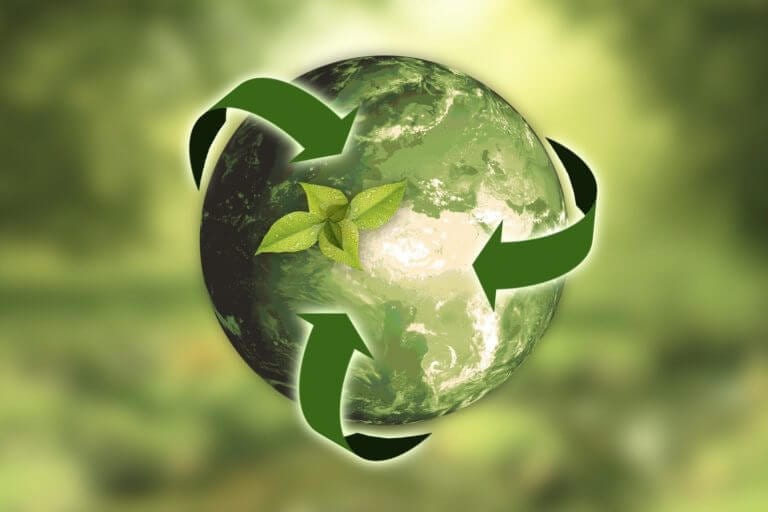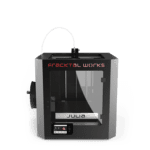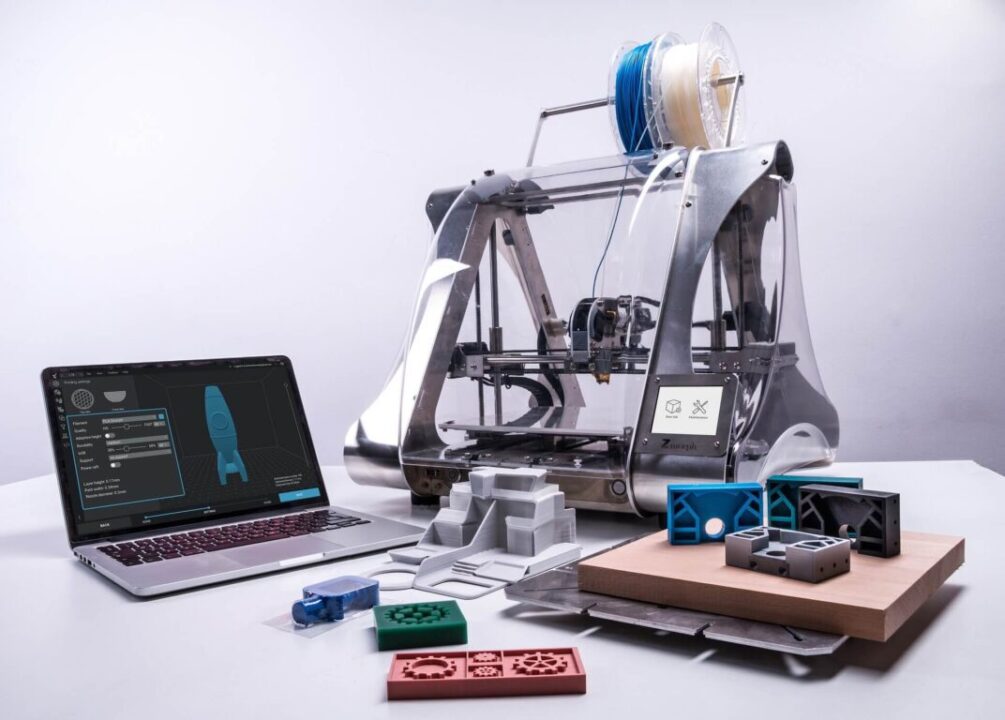3D Printing and Sustainable development

3D printing is changing the outlook of contemporary life, and the technology is being adopted by both hobbyists and experts alike. Opening up new innovative potential possibilities, individuals involved with 3D printing are making home utensils, show-stopping modern art, parts for industrial equipment, prosthetics, and that’s only the tip of the iceberg. It’s getting utilized in the assembly line to make medical equipment and the automotive industry. There is a burgeoning concern about the renewability and sustainability of crude materials. So it’s essential to find a way to initiate the management of waste material.
Modern-day 3D printers adopt a layered strategy for printing objects. They set down layer after layer of material with absolute accuracy to make precisely crafted products and prototypes.
There are numerous kinds of 3D printers:
- Fused Deposition Modelling (FDM) uses an additive manufacturing process for modeling and prototyping.
- PolyJet Photopolymer that creates realistic prototypes.
- Selective Laser Sintering (SLS) uses an additive manufacturing process with lasers.
- Stereolithography (SLA) uses a photopolymerization process.
The waste generated from 3D Printing
It’s no secret, 3D printing produces a great deal of waste. Making new items requires experiencing multiple iteration cycles, and each process can produce unnecessary prints. Tossing those prints out can cause significant environmental degradation. The ideal scenario would involve making a 3D machine that recycles any plastic you throw into it and turns it into a biodegradable compound that can be discarded out the window when you decided to upgrade. A couple of projects have popped up to produce machines that can essentially do the same thing.
The fundamental objective of additive manufacturing, by and large, has been to create lesser wastage than different forms of manufacturing and ensure production remains low cost. Nonetheless, it is no surprise that 3D printing, too, in the end, prompts at least some type of wastage. But what happens to prints that don’t make the final cut? Or prints with defects in them or even prints that are just made to test the machine’s capabilities.
This depends entirely on the material utilized. Materials like PLA, for instance, can be melted down and reused. Two or three organizations are actively attempting to diminish wastage and create more practical techniques for recycling unused material.
How to make 3D Printing sustainable: Some Ideas and Examples
Fungus: The plastic of the future?

A craftsman from The Netherlands, Eric Klarenbeek, has gone above and beyond when reusing plastics or utilizing bioplastic filament. He has concocted a creative and exceptionally artistic strategy for 3D printing with the naturally growing compound fungus. The procedure used by the 35-year-old craftsman is quite astounding. Using a ground-up straw, he implants it with Mycelium fungus as the fungus is known for favoring straw, thus the reason for its use. He utilizes this material as sort of a filament within a large 3D printer.
The printer works like some other FDM printer, gradually extruding the straw and mycelium blend, layer by layer until the desired product is made. Contradictory to conventional FDM printers, there is no requirement for heat. Rather than liquefying plastics, Klarenbeek depends on nature to do its work. Once an object is printed out utilizing his mixture, he soaks it in water and gives it a chance to sit for two or three days. Gradually the mycelium growth takes hold and, as it develops, replaces the water, intertwining with the straw blend. The final product is a vital structure that is exceptionally light in weight, sort of like a wine cork’s consistency.
Although we may not be seeing houses made using straw and mushrooms at any point soon, the technique utilized here is undoubtedly one that is quite alluring. Since the printed straw does not require heat while extruded, it spares significantly on energy costs. What’s more, when the printed object is no longer necessary, it very well may be composted and broken down in somebody’s garden.
Perpetual Plastic Project: A solution to after-party cleanups?

Another organization that goes by the Perpetual Plastic Project aims to recycle materials like red solo cups and other objects that you would most likely discard at a music concert. The Perpetual Plastic Project is an intuitive recycling establishment for young and old where plastic waste is reused on the spot and turned into new items by 3D-printers.
The process consist of 4 steps:
1. Cleaning & Dyeing the waste plastic.
2. Shredding the plastic into small pieces.
3. Extruding the plastic into 3d-printer filament.
4. 3D-printing of a new product based on a 3D model.
The Protocycler: Discarding old 3D filaments never looked this good

Image Source: https://www.3dnatives.com/en/protocycler-recycling-system-3d-printer-3d-prints-plastic-waste-151120185/
ReDeTec is a Toronto-based startup that puts forth an effective method to reuse and re-make their 3D printing filament at home. Initially propelled through an Indiegogo crowdfunding effort in 2014 (which raised 146% of its $50K objective).
Purchasing filaments produced using recycled materials is a decent answer for your environmental concerns. However, it may be less so for your financial ones. That’s where ReDeTec comes in with its ProtoCycler, which incorporates a built-in grinder, diameter input, and automatic spooling. All you have to do is collect the old filaments, drop them into the hero, feed them into the main machine and watch it work its magic. ReDeTec claims by recycling your old 3D prints or using virgin plastic pellets to make spools, you will reduce your 3D printing costs by around 80%.
Protoprint: A company with a cause
Closer to home, we have the social enterprise Protoprint that aims to provide waste pickers in urban India with the mechanics and technology required to produce prime, competitive, morally sourced filaments for 3D printers from rubbish and discarded plastic that they gather. Protoprint is a social enterprise that was established by environmental engineer Sidhant Pai and his parents in 2012 to address poor work conditions and accelerating pollution rate levels, anchored an association with SWaCH to change high-density polyethylene (HDPE)- based items, for example, plastic containers into filament for 3D printers.
Protoprint collaborates with waste picker cooperatives, sets up filament labs at landfills, and trains waste pickers at the sites to utilize low-cost technology to examine, sift through, shred and extrude the plastic into 3D printer filament. SWaCH, short for Solid Waste Collection and Handling, is a cooperative formed by waste pickers and laborers at a waste disposal site in Pune, India. Workers at SWaCH provide Protoprint with the vital waste material that Pai and his team use to make filaments.
The Impact
That Matters.
COST
90%
Reduction in cost
Time
95%
Reduction in Time
Supply Chain
ZERO
Inventory & warehousing
Sign up for a free Discovery Session and understand 3D Printing’s ROI in your Industry
“One of the main applications they use 3D printing for is custom workpiece holders which mount on the machine conveyors.”
- Inventory can be managed smartly adding value to the service and maintenance teams efforts.
- Mistake-proofing and inadvertent error prevention can be implemented on the factory floor
- Developments timelines of such parts are much more faster when implemented using additive manufacturing
Solutions
3D Printers
Design for Additive
3D Printing Service
3D Printers

Desktop
Julia Classic
Julia Advanced
Julia Extended

Professional
Julia Pro Singe
Julia Pro Dual

Industrial
Volterra 400 S
Volterra 400 D
Volterra HT
Get Free sample Print
Book a demo
Design for Additive
Your Extended 3D Printing Team.
We Help You With :
- Design Analysis and Optimisation for Additive Manufacturing
- Jigs & Fixtures Design
- Product Design
- CAD Design and 3D Scanning
- Reverse Engineering
- Application Assistance
- Technology and Material Consulting
- 3D Printing ROI Analysis
3D Printing Service
3D Print Your Design
Upload your design and 3D Print!
Learn
Learn More About 3D Printing
3D Printing is set to revolutionaize the way several industries work, from Medicine to Space Exploration to Education.
Learning and adopting 3D Prinring in your field may just be the Next Big Thing in your industry or workplace
3D Printing Workshop
YouTube Channel
discovery session
Contact us
[hubspot type=form portal=8903899 id=43044e05-cd24-4333-8e16-0d2be9152648]





